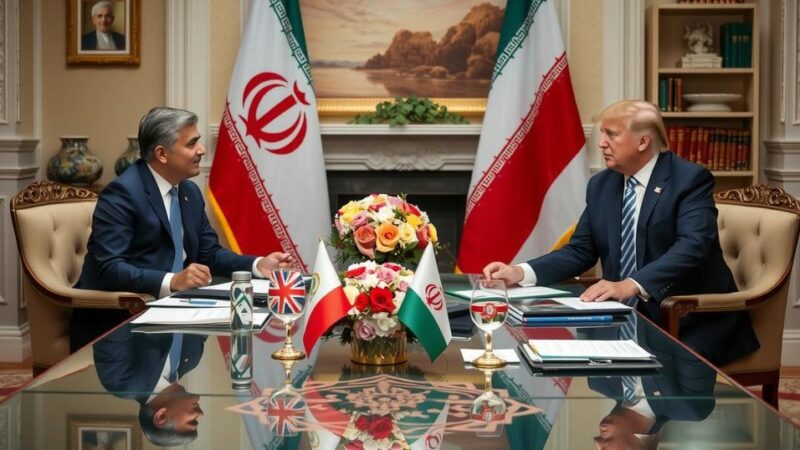Iran is actively endorsing Hezbollah and Lebanese resistance in the face of a possible ceasefire with Israel. As Tehran sends aid to Lebanon, it continues to provide clandestine support to Hezbollah. The situation poses strategic choices for Iran, including nuclear development and actions through its regional proxies. The forthcoming weeks will be critical in determining Iran’s approach as a ceasefire looms.
In a recent interaction, Iranian Foreign Minister Abbas Araghchi reaffirmed Iran’s solidarity with Lebanon, particularly in light of a potentially emerging ceasefire between Israel and Hezbollah. Amid growing regional tensions, Iran has positioned itself as an advocate for Lebanese resistance, voicing support for both the populace and the government. This advocacy is symbolized by Iran’s recent deployment of a medical mission to Lebanon, indicative of its ongoing support amidst its clandestine arms transfer to Hezbollah, which continues behind the scenes.
Araghchi’s remarks, made during a phone call with Mohammad Reza Ra’ouf Sheibani, the Iranian representative for West Asia, emphasized the courage of Lebanese resistance fighters against perceived Israeli aggression. As the situation escalates, it appears Iran is attempting to promote a narrative that connects Hezbollah’s actions with broader Palestinian resistance movements, particularly following the Hamas attack on October 7, even though there are indications that Hezbollah was not fully aware of the attack’s timing.
The ceasefire being contemplated could serve as a pivotal moment for Iran and the region at large. Hezbollah initially seemed compelled into conflict, resulting in retaliatory measures against Israeli incursions. As tensions escalated, Israel intensified military operations in southern Lebanon, indicating the deepening crisis.
Following significant developments, including Israel’s ground operations and the release of strategic photographs depicting military advances, it appears that a possible ceasefire is now on the horizon. However, this potential détente raises questions regarding Iran’s subsequent actions and considerations.
Iran is now confronted with a critical juncture that could lead to decisive actions regarding its nuclear ambitions or escalation through its proxies in nearby regions such as Iraq and Syria to target Israel. The proposed ceasefire, potentially lasting up to 60 days, presents Iran with opportunities to reassess its strategic planning in light of the incoming US presidential administration. The forthcoming weeks will prove to be crucial in determining the path Iran opts to pursue, particularly whether it prioritizes internal nuclear developments or facilitates proxy attacks on Israel.
The dynamics of Middle Eastern geopolitics reveal a complex interplay of alliances and hostilities, particularly regarding Iran’s role in supporting groups like Hezbollah. Following heightened tensions marked by the October 7 Hamas attack, Iran has sought to solidify its position as a regional power and patron of resistance groups in Lebanon and Palestine. The ceasefire discussions arrive amidst ongoing conflicts with Israel, wherein Hezbollah’s involvement could shift based on Iran’s strategic calculations. Overall, these developments necessitate close attention to Iran’s influence over its proxies and the implications for regional stability.
The potential ceasefire between Israel and Hezbollah represents a significant moment for Iran, offering a strategic opportunity to recalibrate its actions in the region. As Tehran weighs its options, including the pursuit of nuclear capabilities versus empowering its proxies to exert pressure on Israel, the next few weeks are likely to reveal crucial insights into its strategic priorities and responses to changing circumstances. The intersection of domestic and external pressures will likely shape Iran’s decisions as it approaches this pivotal moment in its foreign policy.
Original Source: www.jpost.com







